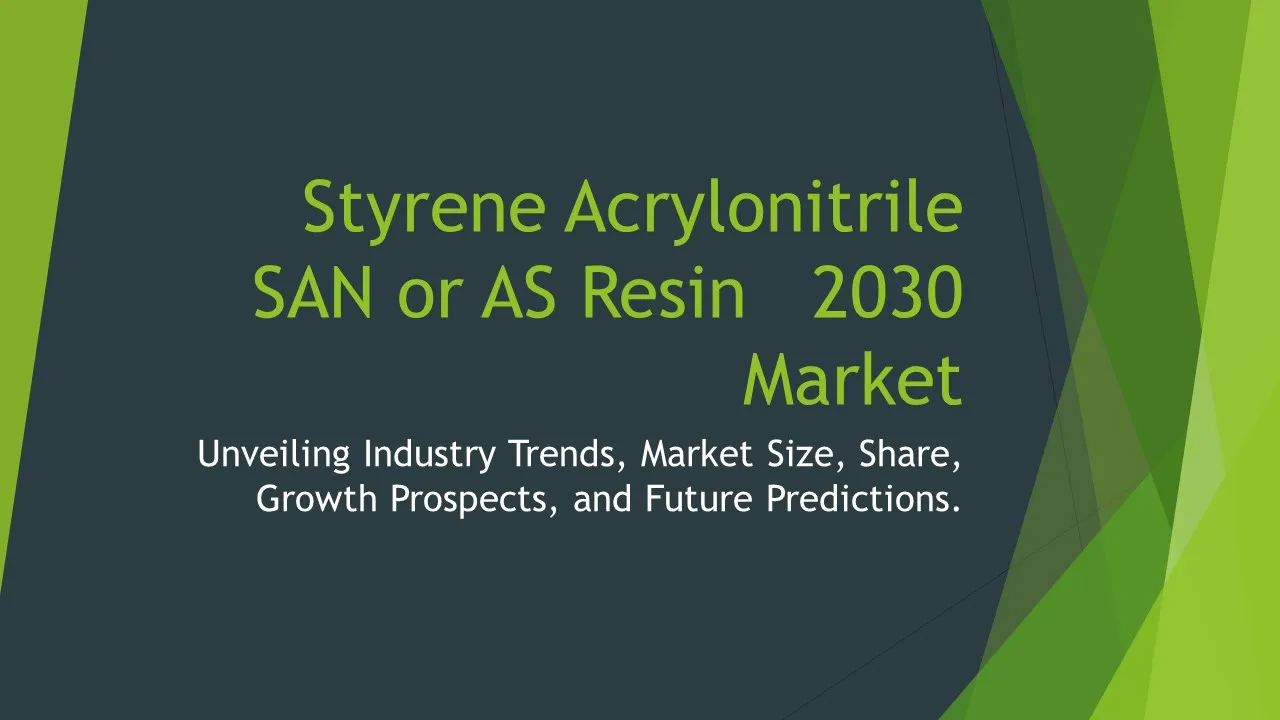Fluorocarbon Metallic Paint Sales
Fluorocarbon Metallic Paint Market Segments - by Product Type (Water-Based Fluorocarbon Metallic Paint, Solvent-Based Fluorocarbon Metallic Paint, Powder Fluorocarbon Metallic Paint, UV-Cured Fluorocarbon Metallic Paint, High-Temperature Fluorocarbon Metallic Paint), Application (Automotive, Construction, Furniture, Electronics, Aerospace), Distribution Channel (Online Stores, Hardware Stores, Specialty Stores, Direct Sales), Ingredient Type (Metallic Pigments, Resins, Additives, Solvents, Curing Agents), and Region (North America, Europe, Asia Pacific, Latin America, Middle East & Africa) - Global Industry Analysis, Growth, Share, Size, Trends, and Forecast 2025-2035
- Report Preview
- Table Of Content
- Segments
- Methodology
Fluorocarbon Metallic Paint Sales Market Outlook
The global fluorocarbon metallic paint market is projected to reach USD 3.2 billion by 2035, growing at a CAGR of approximately 5.8% during the forecast period of 2025-2035. This growth can be attributed to the increasing demand for durable and aesthetically pleasing coatings across various industries such as automotive, construction, and electronics. The rising awareness of the benefits of fluorocarbon metallic paints, including resistance to weathering and corrosion, is driving their adoption. Additionally, technological advancements in paint formulations and increasing environmental regulations are expected to further propel market growth. The expanding global automotive industry is particularly significant, as manufacturers are increasingly utilizing advanced paint technologies to enhance vehicle appearance and performance.
Growth Factor of the Market
The growth of the fluorocarbon metallic paint market is primarily driven by the escalating demand for high-performance coatings that offer enhanced durability and aesthetic appeal. These paints are extensively utilized across various applications, particularly in the automotive and construction sectors, where resistance to harsh environmental conditions is critical. Moreover, the increasing focus on sustainability and environmentally friendly manufacturing processes has led to a shift towards water-based and UV-cured formulations, which are less harmful to the environment compared to traditional solvent-based paints. The flourishing construction industry, fueled by rapid urbanization and infrastructural development, is also contributing significantly to the market's expansion. Furthermore, as consumers become more discerning about product quality and finish, manufacturers are investing in innovative paint technologies that deliver superior performance and finish quality, thus driving market growth.
Key Highlights of the Market
- The global fluorocarbon metallic paint market is forecasted to reach USD 3.2 billion by 2035.
- Automotive applications dominate the market, driven by demand for high-performance coatings.
- Water-based formulations are gaining traction due to environmental regulations.
- Asia Pacific is expected to witness the highest growth rate, supported by rapid industrialization.
- Technological innovations in paint formulations are reshaping market dynamics.
By Product Type
Water-Based Fluorocarbon Metallic Paint:
Water-based fluorocarbon metallic paints have gained immense popularity due to their environmentally friendly characteristics and low volatile organic compound (VOC) emissions. These paints are easy to apply and clean up, making them a preferred choice for both consumers and professionals. Their excellent adhesion properties and ability to maintain color depth and gloss over time make them ideal for various applications, particularly in the automotive and furniture sectors. Furthermore, advancements in water-based technology have significantly improved the performance characteristics of these coatings, enabling them to compete effectively with solvent-based alternatives.
Solvent-Based Fluorocarbon Metallic Paint:
Solvent-based fluorocarbon metallic paints offer robust performance and durability, which are essential for demanding applications. These paints are widely used in environments where resistance to extreme weather conditions is critical, such as in the automotive and aerospace industries. The high-solids content in solvent-based formulations ensures a thick, even coat that enhances the finish's longevity and visual appeal. However, due to increasing environmental regulations regarding VOC emissions, there is a gradual shift towards low-VOC or eco-friendly solvent-based options, which are becoming more prevalent in the market.
Powder Fluorocarbon Metallic Paint:
Powder fluorocarbon metallic paints are recognized for their exceptional durability and environmental benefits, as they produce minimal waste during application. The powder coating process eliminates the need for solvents, resulting in a significantly lower environmental impact. These paints are particularly suitable for industrial applications, including metal fabrication and heavy equipment, where long-lasting protection is crucial. The rising demand for sustainable coating solutions is driving the growth of this segment, with manufacturers continuously innovating to improve the performance and aesthetics of powder coatings.
UV-Cured Fluorocarbon Metallic Paint:
UV-cured fluorocarbon metallic paints have emerged as a cutting-edge solution in the coatings market, utilizing ultraviolet light to cure the paint instantly. This technology not only accelerates production processes but also enhances the durability and chemical resistance of the paint. These coatings are particularly advantageous for applications requiring quick turnaround times, such as in the electronics and automotive industries. The strong adhesion properties and vibrant finish of UV-cured paints make them an attractive choice for manufacturers looking to improve product quality while meeting stringent environmental standards.
High-Temperature Fluorocarbon Metallic Paint:
High-temperature fluorocarbon metallic paints are specially formulated to withstand elevated temperatures without degrading or losing their aesthetic appeal. These paints are essential for applications in industries such as aerospace, automotive, and heavy machinery, where components are exposed to extreme heat. The ability of these coatings to maintain their color and finish under harsh conditions is a key selling point. As industries increasingly prioritize performance and safety, the demand for high-temperature resistant paints is expected to grow steadily, further propelling this segment's market share.
By Application
Automotive:
The automotive industry is one of the largest consumers of fluorocarbon metallic paints, primarily due to the need for coatings that not only protect but also enhance the vehicle's aesthetic appeal. These paints are utilized in various parts of vehicles, including body panels and trims, where durability and resistance to environmental factors are paramount. With the increasing demand for electric and hybrid vehicles, manufacturers are seeking advanced paint solutions that offer both performance and sustainability. The trend towards custom finishes and vibrant colors is also driving innovation within this application segment, resulting in a burgeoning market for fluorocarbon metallic paints.
Construction:
In the construction sector, fluorocarbon metallic paints are widely used for exterior and interior applications, ranging from facades to metal structures. Their exceptional resistance to UV radiation and weathering makes them ideal for protecting buildings from the elements, thereby extending the lifespan of structures. Furthermore, with the rise of green building practices, there is an increasing preference for eco-friendly paint formulations, which has led to the development of water-based and low-VOC fluorocarbon options. The ongoing urbanization and infrastructure development across the globe are expected to fuel the growth of this application segment, as the demand for durable and aesthetically pleasing coatings continues to rise.
Furniture:
The furniture application segment of the fluorocarbon metallic paint market is gaining traction, largely due to the trend of personalization and customization in home decor. These paints are coveted for their ability to provide a high-quality, attractive finish that enhances the overall appearance of furniture pieces. Additionally, the durability and scratch resistance of fluorocarbon metallic paints are significant advantages in the furniture industry, where products are subject to daily wear and tear. With the rise of e-commerce and online furniture sales, manufacturers are increasingly adopting advanced paint technologies to meet consumer expectations for quality and aesthetics, further driving market growth in this segment.
Electronics:
Fluorocarbon metallic paints are increasingly being utilized in the electronics industry due to their excellent thermal and chemical resistance properties. These paints are applied to various electronic components to provide protection against corrosion and environmental degradation, which is crucial for maintaining product reliability and functionality. The demand for electronic devices with enhanced aesthetic appeal and vibrant finishes is also contributing to the growth of this application segment. As the electronics industry continues to innovate and expand, the need for high-performance coatings will likely rise, further supporting market growth.
Aerospace:
The aerospace industry requires coatings that meet stringent performance standards, and fluorocarbon metallic paints are well-suited to this demanding environment. These paints are used on aircraft exteriors, providing protection against harsh weather conditions and enhancing fuel efficiency by reducing drag. The lightweight nature of these coatings, combined with their ability to withstand extreme temperatures, makes them ideal for aerospace applications. Additionally, as aviation technology advances, there is a growing emphasis on reducing the environmental impact of coatings, driving the adoption of eco-friendly fluorocarbon formulations in this sector.
By Distribution Channel
Online Stores:
Online stores have emerged as a dominant distribution channel for fluorocarbon metallic paints, catering to the growing consumer preference for convenience and accessibility. E-commerce platforms provide a wide array of products, allowing customers to compare prices, read reviews, and make informed purchasing decisions from the comfort of their homes. The ability to access detailed product specifications and gain insights from customer feedback enhances the buying experience. Additionally, the ongoing shift towards digital shopping, especially following the pandemic, has accelerated the growth of this distribution channel, enabling manufacturers to reach a broader audience and boost sales.
Hardware Stores:
Hardware stores remain a vital distribution channel for fluorocarbon metallic paints, serving both DIY enthusiasts and professional contractors. These stores offer a physical space where customers can examine paint products, receive expert advice, and access complementary tools and materials for their projects. The knowledgeable staff at hardware stores can provide insights into the best paint options and application techniques, which enhances customer satisfaction and reinforces brand loyalty. Furthermore, the convenience of purchasing paints alongside other home improvement supplies solidifies the importance of hardware stores in the distribution landscape for fluorocarbon metallic paints.
Specialty Stores:
Specialty stores that focus on paint and coatings offer a curated selection of fluorocarbon metallic paints, catering specifically to consumers and professionals seeking high-quality products. These stores often feature knowledgeable staff who can provide expert guidance on paint selection based on end-use requirements. The emphasis on niche markets allows specialty stores to carry a diverse range of colors, textures, and formulations, appealing to customers with specific needs. As the demand for specialized products continues to rise, these stores are becoming increasingly important in the distribution of fluorocarbon metallic paints.
Direct Sales:
Direct sales channels, including manufacturer-owned stores or direct-to-consumer sales models, provide an opportunity for paint manufacturers to engage directly with their customers. This approach allows for better control over product quality, pricing, and customer service, fostering strong relationships between manufacturers and end-users. Direct sales are particularly beneficial for high-end or custom paint products, as they enable brands to effectively communicate their value propositions and gain insights into customer preferences. As more manufacturers recognize the benefits of direct engagement, this distribution channel is expected to grow in significance within the fluorocarbon metallic paint market.
By Ingredient Type
Metallic Pigments:
Metallic pigments are a key ingredient in fluorocarbon metallic paints, providing the distinctive shimmering effect and enhancing the aesthetic appeal of the coatings. These pigments are sourced from various metals, including aluminum, bronze, and copper, and are available in different particle sizes and shapes to achieve a range of visual effects. The quality and type of metallic pigments used directly influence the paint's finish, durability, and performance characteristics. As consumers become increasingly interested in unique finishes and vibrant colors, the demand for high-quality metallic pigments in fluorocarbon paints is expected to rise, driving innovation in this ingredient segment.
Resins:
Resins are essential components of fluorocarbon metallic paints, serving as the binding agents that ensure adhesion to surfaces and overall film integrity. The type of resin used influences the paint's durability, gloss, and resistance to environmental factors such as UV radiation, moisture, and chemicals. With advancements in resin technology, manufacturers are continuously developing formulations that enhance performance while minimizing environmental impact. The growing emphasis on sustainability and eco-friendly practices is leading to an increased demand for low-VOC resins, resulting in innovative formulations that appeal to environmentally conscious consumers.
Additives:
Additives play a crucial role in enhancing the performance characteristics of fluorocarbon metallic paints. These substances are included to improve properties such as flow, leveling, and drying times, ensuring a smooth and even application. Additionally, additives can enhance the paint's resistance to corrosion, UV degradation, and other environmental factors, contributing to its longevity and effectiveness. As manufacturers strive to meet the evolving needs of consumers and industries, the development of advanced additives that improve overall paint performance is expected to drive growth in this segment.
Solvents:
Solvents are integral to the formulation of fluorocarbon metallic paints, particularly in solvent-based varieties where they facilitate application and ensure proper dispersion of pigments and resins. The choice of solvent influences the paint's viscosity, drying time, and overall handling characteristics. However, with increasing environmental regulations and consumer preferences shifting towards low-VOC options, there is a growing trend towards using eco-friendly solvents or water-based alternatives in paint formulations. The industry is witnessing significant innovation aimed at reducing solvent content without compromising paint performance, which is likely to shape the future of this ingredient segment.
Curing Agents:
Curing agents are essential in the development of fluorocarbon metallic paints, particularly in formulations requiring cross-linking for enhanced durability and performance. These agents facilitate the curing process, ensuring that the paint achieves its desired hardness and chemical resistance. The selection of appropriate curing agents can significantly impact the final properties of the paint, such as gloss, adhesion, and resistance to environmental factors. As manufacturers increasingly focus on sustainability, the development of eco-friendly curing agents is becoming more prevalent, contributing to the growth of this segment as industries seek high-performance coatings with a minimal environmental footprint.
By Region
The regional analysis of the fluorocarbon metallic paint market reveals distinct trends and growth opportunities across different areas. North America holds a significant market share, driven by the robust automotive and construction sectors, with a projected CAGR of 5.5% from 2025 to 2035. The increasing demand for high-performance coatings, coupled with technological advancements in paint formulations, is propelling the growth of this region. Additionally, the presence of key manufacturers and a strong distribution network further strengthen North America's position in the global market. Furthermore, the rising emphasis on sustainable practices and eco-friendly paint solutions is expected to drive innovation and growth in this region.
In contrast, the Asia Pacific region is anticipated to witness the highest growth rate during the forecast period, driven by rapid industrialization and urbanization. With countries like China and India leading the charge, there is a growing demand for high-quality coatings across various sectors, including automotive, construction, and electronics. The market in Asia Pacific is expected to experience a CAGR of approximately 6.5%, fueled by investments in infrastructure development and the expansion of the manufacturing sector. Additionally, the increasing focus on sustainability and the introduction of innovative, low-VOC fluorocarbon formulations are likely to further enhance market growth in this region. Overall, while North America maintains a strong market presence, the Asia Pacific region offers significant growth potential for fluorocarbon metallic paint manufacturers.
Opportunities
The fluorocarbon metallic paint market presents numerous opportunities for growth and innovation, particularly in response to evolving consumer preferences and regulatory landscapes. One of the most significant opportunities lies in the development of sustainable and eco-friendly paint formulations. As environmental concerns continue to rise, consumers and industries alike are increasingly prioritizing low-VOC and water-based options that minimize environmental impact. Manufacturers who invest in research and development to create high-performance eco-friendly paints stand to gain a competitive advantage in the marketplace. Additionally, the growing trend toward customization and personalization in various industries, including automotive and furniture, presents an opportunity for manufacturers to offer tailored paint solutions that meet specific aesthetic and performance requirements.
Moreover, as industries continue to expand globally, new markets are emerging for fluorocarbon metallic paints, especially in developing regions. The rapid urbanization and infrastructure development in regions such as Asia Pacific and Latin America are driving demand for high-quality coatings in construction and automotive applications. Companies that strategically position themselves to capitalize on these emerging markets can significantly increase their market share. Furthermore, collaboration with hardware stores, online retailers, and specialty distributors can enhance product accessibility, thereby reaching a broader audience. By leveraging technological advancements and focusing on sustainability, manufacturers can unlock new opportunities for growth in the fluorocarbon metallic paint market.
Threats
Despite the promising growth of the fluorocarbon metallic paint market, several threats could hinder market expansion. One primary concern is the stringent regulations imposed by environmental authorities regarding VOC emissions and hazardous materials in paint formulations. These regulations can restrict the use of certain chemicals and solvents, limiting manufacturers' formulation options and potentially increasing production costs. Adapting to these regulations may require significant investments in research and development to create compliant formulations that still meet performance standards. Furthermore, the volatility of raw material prices can pose a challenge for manufacturers, as fluctuations may affect the overall cost of production and, consequently, profit margins.
Additionally, intense competition among players in the fluorocarbon metallic paint market poses a potential threat to profitability. As more companies enter the market with similar product offerings, price wars can emerge, leading to decreased profit margins. To remain competitive, manufacturers may feel pressured to lower prices or increase promotional efforts, impacting overall financial performance. Furthermore, the rapid pace of technological advancements in paint formulations means that companies must continuously innovate to stay ahead, which can be resource-intensive. Manufacturers that fail to keep up with technological trends or shifting consumer preferences may find it challenging to maintain market relevance in the long term.
Competitor Outlook
- BASF SE
- AkzoNobel N.V.
- PPG Industries, Inc.
- Sherwin-Williams Company
- RPM International Inc.
- Tikkurila Oyj
- Covestro AG
- Henkel AG & Co. KGaA
- Valspar Corporation
- Axalta Coating Systems Ltd.
- Ferro Corporation
- Eastman Chemical Company
- Clariant AG
- Kansai Paint Co., Ltd.
- Jotun A/S
The competitive landscape of the fluorocarbon metallic paint market is characterized by a mix of established multinational corporations and emerging players striving to innovate and capture market share. Major companies such as BASF SE, AkzoNobel N.V., and PPG Industries, Inc. dominate the market due to their extensive product portfolios, advanced research and development capabilities, and strong customer relationships. These industry leaders focus on introducing innovative, high-performance formulations that meet the evolving needs of consumers and industries. Moreover, they are investing heavily in sustainability initiatives, striving to create eco-friendly paint solutions that align with global environmental standards.
In addition to established players, several smaller companies are emerging in the market, offering niche products and specialized formulations to cater to specific customer needs. These companies often focus on customization and personalized service, allowing them to build strong relationships with their customer base. As competition intensifies, collaboration and partnerships between companies are becoming increasingly common, enabling them to leverage complementary strengths and enhance their market presence. This trend towards collaboration fosters innovation and allows companies to share resources, ultimately benefiting consumers with a broader range of high-quality products.
Key companies like Sherwin-Williams, RPM International, and Valspar Corporation are also expanding their global footprint through acquisitions and partnerships. These strategies allow them to tap into new markets and leverage local expertise to enhance their product offerings. Furthermore, as the demand for sustainable and eco-friendly coatings continues to rise, these companies are prioritizing the development of low-VOC and water-based formulations, ensuring they remain competitive in an evolving market landscape. By balancing innovation with sustainability initiatives, major players in the fluorocarbon metallic paint market are positioning themselves for long-term success.
1 Appendix
- 1.1 List of Tables
- 1.2 List of Figures
2 Introduction
- 2.1 Market Definition
- 2.2 Scope of the Report
- 2.3 Study Assumptions
- 2.4 Base Currency & Forecast Periods
3 Market Dynamics
- 3.1 Market Growth Factors
- 3.2 Economic & Global Events
- 3.3 Innovation Trends
- 3.4 Supply Chain Analysis
4 Consumer Behavior
- 4.1 Market Trends
- 4.2 Pricing Analysis
- 4.3 Buyer Insights
5 Key Player Profiles
- 5.1 BASF SE
- 5.1.1 Business Overview
- 5.1.2 Products & Services
- 5.1.3 Financials
- 5.1.4 Recent Developments
- 5.1.5 SWOT Analysis
- 5.2 Jotun A/S
- 5.2.1 Business Overview
- 5.2.2 Products & Services
- 5.2.3 Financials
- 5.2.4 Recent Developments
- 5.2.5 SWOT Analysis
- 5.3 Clariant AG
- 5.3.1 Business Overview
- 5.3.2 Products & Services
- 5.3.3 Financials
- 5.3.4 Recent Developments
- 5.3.5 SWOT Analysis
- 5.4 Covestro AG
- 5.4.1 Business Overview
- 5.4.2 Products & Services
- 5.4.3 Financials
- 5.4.4 Recent Developments
- 5.4.5 SWOT Analysis
- 5.5 Tikkurila Oyj
- 5.5.1 Business Overview
- 5.5.2 Products & Services
- 5.5.3 Financials
- 5.5.4 Recent Developments
- 5.5.5 SWOT Analysis
- 5.6 AkzoNobel N.V.
- 5.6.1 Business Overview
- 5.6.2 Products & Services
- 5.6.3 Financials
- 5.6.4 Recent Developments
- 5.6.5 SWOT Analysis
- 5.7 Ferro Corporation
- 5.7.1 Business Overview
- 5.7.2 Products & Services
- 5.7.3 Financials
- 5.7.4 Recent Developments
- 5.7.5 SWOT Analysis
- 5.8 Valspar Corporation
- 5.8.1 Business Overview
- 5.8.2 Products & Services
- 5.8.3 Financials
- 5.8.4 Recent Developments
- 5.8.5 SWOT Analysis
- 5.9 Henkel AG & Co. KGaA
- 5.9.1 Business Overview
- 5.9.2 Products & Services
- 5.9.3 Financials
- 5.9.4 Recent Developments
- 5.9.5 SWOT Analysis
- 5.10 PPG Industries, Inc.
- 5.10.1 Business Overview
- 5.10.2 Products & Services
- 5.10.3 Financials
- 5.10.4 Recent Developments
- 5.10.5 SWOT Analysis
- 5.11 Kansai Paint Co., Ltd.
- 5.11.1 Business Overview
- 5.11.2 Products & Services
- 5.11.3 Financials
- 5.11.4 Recent Developments
- 5.11.5 SWOT Analysis
- 5.12 RPM International Inc.
- 5.12.1 Business Overview
- 5.12.2 Products & Services
- 5.12.3 Financials
- 5.12.4 Recent Developments
- 5.12.5 SWOT Analysis
- 5.13 Eastman Chemical Company
- 5.13.1 Business Overview
- 5.13.2 Products & Services
- 5.13.3 Financials
- 5.13.4 Recent Developments
- 5.13.5 SWOT Analysis
- 5.14 Sherwin-Williams Company
- 5.14.1 Business Overview
- 5.14.2 Products & Services
- 5.14.3 Financials
- 5.14.4 Recent Developments
- 5.14.5 SWOT Analysis
- 5.15 Axalta Coating Systems Ltd.
- 5.15.1 Business Overview
- 5.15.2 Products & Services
- 5.15.3 Financials
- 5.15.4 Recent Developments
- 5.15.5 SWOT Analysis
- 5.1 BASF SE
6 Market Segmentation
- 6.1 Fluorocarbon Metallic Paint Sales Market, By Application
- 6.1.1 Automotive
- 6.1.2 Construction
- 6.1.3 Furniture
- 6.1.4 Electronics
- 6.1.5 Aerospace
- 6.2 Fluorocarbon Metallic Paint Sales Market, By Product Type
- 6.2.1 Water-Based Fluorocarbon Metallic Paint
- 6.2.2 Solvent-Based Fluorocarbon Metallic Paint
- 6.2.3 Powder Fluorocarbon Metallic Paint
- 6.2.4 UV-Cured Fluorocarbon Metallic Paint
- 6.2.5 High-Temperature Fluorocarbon Metallic Paint
- 6.3 Fluorocarbon Metallic Paint Sales Market, By Ingredient Type
- 6.3.1 Metallic Pigments
- 6.3.2 Resins
- 6.3.3 Additives
- 6.3.4 Solvents
- 6.3.5 Curing Agents
- 6.4 Fluorocarbon Metallic Paint Sales Market, By Distribution Channel
- 6.4.1 Online Stores
- 6.4.2 Hardware Stores
- 6.4.3 Specialty Stores
- 6.4.4 Direct Sales
- 6.1 Fluorocarbon Metallic Paint Sales Market, By Application
7 Competitive Analysis
- 7.1 Key Player Comparison
- 7.2 Market Share Analysis
- 7.3 Investment Trends
- 7.4 SWOT Analysis
8 Research Methodology
- 8.1 Analysis Design
- 8.2 Research Phases
- 8.3 Study Timeline
9 Future Market Outlook
- 9.1 Growth Forecast
- 9.2 Market Evolution
10 Geographical Overview
- 10.1 Europe - Market Analysis
- 10.1.1 By Country
- 10.1.1.1 UK
- 10.1.1.2 France
- 10.1.1.3 Germany
- 10.1.1.4 Spain
- 10.1.1.5 Italy
- 10.1.1 By Country
- 10.2 Asia Pacific - Market Analysis
- 10.2.1 By Country
- 10.2.1.1 India
- 10.2.1.2 China
- 10.2.1.3 Japan
- 10.2.1.4 South Korea
- 10.2.1 By Country
- 10.3 Latin America - Market Analysis
- 10.3.1 By Country
- 10.3.1.1 Brazil
- 10.3.1.2 Argentina
- 10.3.1.3 Mexico
- 10.3.1 By Country
- 10.4 North America - Market Analysis
- 10.4.1 By Country
- 10.4.1.1 USA
- 10.4.1.2 Canada
- 10.4.1 By Country
- 10.5 Middle East & Africa - Market Analysis
- 10.5.1 By Country
- 10.5.1.1 Middle East
- 10.5.1.2 Africa
- 10.5.1 By Country
- 10.6 Fluorocarbon Metallic Paint Sales Market by Region
- 10.1 Europe - Market Analysis
11 Global Economic Factors
- 11.1 Inflation Impact
- 11.2 Trade Policies
12 Technology & Innovation
- 12.1 Emerging Technologies
- 12.2 AI & Digital Trends
- 12.3 Patent Research
13 Investment & Market Growth
- 13.1 Funding Trends
- 13.2 Future Market Projections
14 Market Overview & Key Insights
- 14.1 Executive Summary
- 14.2 Key Trends
- 14.3 Market Challenges
- 14.4 Regulatory Landscape
Segments Analyzed in the Report
The global Fluorocarbon Metallic Paint Sales market is categorized based on
By Product Type
- Water-Based Fluorocarbon Metallic Paint
- Solvent-Based Fluorocarbon Metallic Paint
- Powder Fluorocarbon Metallic Paint
- UV-Cured Fluorocarbon Metallic Paint
- High-Temperature Fluorocarbon Metallic Paint
By Application
- Automotive
- Construction
- Furniture
- Electronics
- Aerospace
By Distribution Channel
- Online Stores
- Hardware Stores
- Specialty Stores
- Direct Sales
By Ingredient Type
- Metallic Pigments
- Resins
- Additives
- Solvents
- Curing Agents
By Region
- North America
- Europe
- Asia Pacific
- Latin America
- Middle East & Africa
Key Players
- BASF SE
- AkzoNobel N.V.
- PPG Industries, Inc.
- Sherwin-Williams Company
- RPM International Inc.
- Tikkurila Oyj
- Covestro AG
- Henkel AG & Co. KGaA
- Valspar Corporation
- Axalta Coating Systems Ltd.
- Ferro Corporation
- Eastman Chemical Company
- Clariant AG
- Kansai Paint Co., Ltd.
- Jotun A/S
- Publish Date : Jan 20 ,2025
- Report ID : CH-12918
- No. Of Pages : 100
- Format : |
- Ratings : 4.5 (110 Reviews)









